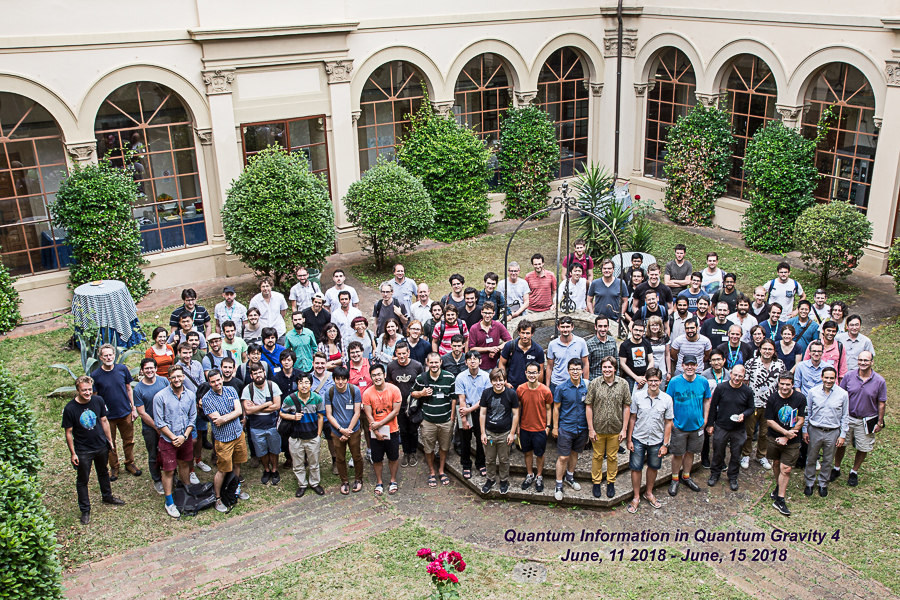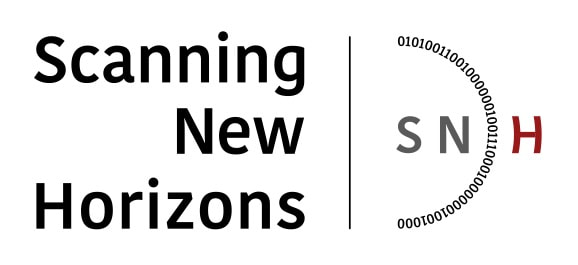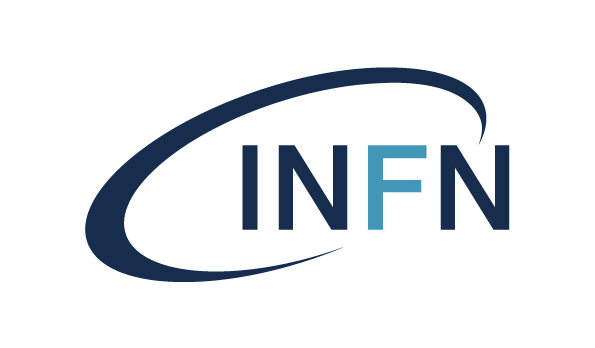Meeting
Quantum Information in Quantum Gravity 4
Jun 11, 2018 - Jun 15, 2018
The event is partially supported by the Simons Collaboration "It from Qubit"
and by the NWO Physics Vrije program
"Scanning new horizons: emergent space-time, black holes and quantum information"
Confirmed SpeakersAlexander Belin (University of Amsterdam) Adam Brown (Stanford University) Raphael Bousso (University of California, Berkeley) Horacio Casini (Centro Atomico, Bariloche) Shira Chapman (Perimeter Institute, Waterloo) Bartlomiej Czech (Institute for Advanced Studies, Princeton) Frederik Denef (Columbia University, New York) Netta Engelhardt (Princeton University) Ben Freivogel (University of Amsterdam) Veronika Hubeny (University of California, Davies) Ted Jacobson (University of Maryland) Daniel Jafferis (Harvard University) Nima Lashkari (Massachusetts Institute of Technology, Boston) Sung-Sik Lee (McMaster University and Perimeter Institute, Waterloo) Adam Levine (University of California, Berkeley) Aitor Lewkowycz (Stanford University) Hong Liu (Massachusetts Institute of Technology, Boston) Seth Lloyd (Massachusetts Institute of Technology, Boston) Alexander Maloney (McGill University, Montreal) Yasunori Nomura (University of California, Berkeley) Jonathan Oppenheim (University College London) Kyriakos Papadodimas (International Center for Theoretical Physics, Trieste) Xiaoliang Qi (Stanford University) Suvrat Raju ((International Center for Theoretical Sciences, Bengaluru) Frank Verstraete (Gent and Vienna University) Aron Wall (Stanford University) Michael Walter (University of Amsterdam)
OrganizersPasquale Calabrese (SISSA, Trieste) Ignacio Cirac (Max Planck Institute, Garching) Jan de Boer (University of Amsterdam) Patrick Hayden (Stanford University, Stanford) Joel Moore (University of California, Berkeley) Robert Myers (Perimeter Institute, Waterloo), Mukund Rangamani (University of California, Davis) Tadashi Takayanagi (Yukawa Institute, Kyoto) Erik Tonni (SISSA, Trieste)
Local organizer
Domenico Seminara
Contact
etonni@sissa.it seminara@fi.infn.it
Main event
Entanglement in Quantum Systems (Workshop) - May 21, 2018
Tensor Networks and Entanglement (Focus Week) - Jun 18, 2018

Talks
| Date | Speaker | Title | Type | Useful Links | ||||
|---|---|---|---|---|---|---|---|---|
| Jun 11, 2018 - 09:00 | Horacio Casini | Anisotropic Unruh temperatures: Local terms in the modular Hamiltonian | Talk | |||||
| Jun 11, 2018 - 10:30 | Veronika Hubeny | Bit thread proof of MMI and bulk locality | Talk |
Abstract
Bit thread proof of MMI and bulk locality In order to elucidate the recent tantalizing hints at a holographic connection between bulk geometry and boundary entanglement, we explore the nature of geometric proofs of entanglement relations. In particular, we use the bit thread formulation of holographic entanglement entropy to highlight the distinction between strong subadditivity and monogamy of mutual information, arguing that the latter is more deeply rooted in bulk locality. |
||||
| Jun 11, 2018 - 11:15 | Daniel Jafferis | Teleportation through wormholes and quantum mechanics from the inside | Talk | |||||
| Jun 11, 2018 - 14:00 | Suvrat Raju | Quantum information measures for restricted sets of observables | Talk |
Abstract
Quantum information measures for restricted sets of observables
We study measures of quantum information when the space spanned by the set of accessible observables is not closed under products, i.e., we consider systems where an observer may be able to measure the expectation values of two operators, |
||||
| Jun 11, 2018 - 14:45 | Bartlomiej Czech | Modular Berry Connection in CFT and Transport in AdS | Talk |
Abstract
Modular Berry Connection in CFT and Transport in AdS Berry studied the effects of changing Hamiltonians; since the modular Hamiltonian is our best CFT handle on bulk physics, it is natural to study changing modular Hamiltonians. I will explain how to set this problem up as a Berry problem. A key concept is the Uhlmann connection, a variant of the Berry connection adapted for transporting mixed states. As an illustrative example, we will look at the Uhlmann transport of OPE blocks / geodesic operators, where the Uhlmann connection generates translations in AdS. Does all of the bulk geometry originate from modular Berry transformations? |
||||
| Jun 11, 2018 - 16:15 | Nima Lashkari | Modular flow of excited states | Talk |
Abstract
Modular flow of excited states We compute the modular operator of excited states in the algebraic approach to quantum field theory. We introduce the relative modular flow, and advocate using it as a simpler method to compute the modular flow of local operators. Our formalism enables us to study how the modular operator changes under null shape deformations. |
||||
| Jun 12, 2018 - 09:00 | Hong Liu | Maximal chaos and hydrodynamics | Talk | |||||
| Jun 12, 2018 - 11:15 | Michael Walter | Rigorous entanglement renormalization from wavelet theory | Talk |
Abstract
Rigorous entanglement renormalization from wavelet theory We will discuss entanglement renormalization schemes which provably approximate the ground states of several non-interacting free-fermion theories. These schemes give hierarchical quantum circuits which build up the states from unentangled degrees of freedom. The circuits are based on pairs of discrete wavelet transforms, which are approximately related by a "half-shift". The error in the approximation can be controlled without ever performing a variational optimization. I will end with some speculation on possible extensions. |
||||
| Jun 12, 2018 - 11:15 | Aron Wall | Violation of the Higher Spin Quantum Null Energy Condition | Talk |
Abstract
Violation of the Higher Spin Quantum Null Energy Condition The quantum null energy condition (QNEC) is a lower bound on the null-null component of the stress-energy tensor. This inequality was recently proven by Balakrishnan et al. for a broad class of interacting conformal field theories. They also claim to have shown a higher spin version of the QNEC, where the stress-tensor is replaced by the lowest weight operator of any higher even spin. However, I will show that this higher spin QNEC is violated in free field theories. While this does not directly contradict their claims, it raises a serious puzzle about the limit as a CFT becomes weakly coupled. |
||||
| Jun 12, 2018 - 14:00 | Seth Lloyd | Quantum information and quantum gravity | Talk |
Abstract
Quantum information and quantum gravity This talk reviews connections between quantum information theory and quantum gravity, including entanglement/area laws, information escape from black holes, and quantum computational models of quantum gravity. |
||||
| Jun 12, 2018 - 14:45 | Alexander Maloney | Phases of Conformal Field Theory at Higher Genus, Modular Bootstrap and Entanglement Entropy | Talk |
Abstract
Phases of Conformal Field Theory at Higher Genus, Modular Bootstrap and Entanglement Entropy Two dimensional conformal field theories are among the most important quantum field theories: they describe important statistical and condensed matter systems near criticality, and -- while not exactly solvable -- many exact techniques can be used which are not available in higher dimensions. I will consider these theories defined on surfaces of genus g>1, where the partition function of the theory can be interpreted as an entanglement Renyi entropy. This leads to a fascinating relationship between (higher genus) modular invariance and information theory. I will describe novel uses of higher genus modular invariance to constrain the structure constants of the theory. I will also discuss a new class of phase transitions which occur in holographic CFTs, which imply that Renyi entropies are not analytic functions of the Renyi parameter. |
||||
| Jun 13, 2018 - 09:00 | Netta Engelhardt | A New Framework for Holographic Area Laws | Talk |
Abstract
A New Framework for Holographic Area Laws I will describe a new prescription for removing low-energy correlations and entanglement in a QFT, which in AdS/CFT translates into coarse-graining over deep bulk data. This prescription gives rise to an infinite family of area laws in the bulk; in three bulk dimensions (and in certain cases in higher dimensions), these area laws are precisely dual to strong subadditivity of von Neumann entropy of subregions in the dual CFT. The area laws can be spacelike, null, and mixed-signature, and include in certain cases the Hawking area theorem. I will discuss quantum corrections as well as a number of implications, including an entropic explanation for certain types of extremal surface barriers. |
||||
| Jun 13, 2018 - 10:30 | Alexandre Belin | Bulk entanglement entropy for perturbative excited states | Talk |
Abstract
Bulk entanglement entropy for perturbative excited states In this talk, I will explain how to calculate the bulk entanglement entropy across the Ryu-Takayanagi surface for a class of low energy states. These states are one-particle states in AdS whose CFT duals are primary states obtained by acting on the vacuum with a single-trace operator. Combining the bulk entanglement entropy with the quantum shift of the minimal area, I will compare the result to a CFT calculation of entanglement entropy, finding a perfect match. This provides a non-trivial check of the JLMS and FLM formulas in a state that is not protected by symmetry. |
||||
| Jun 13, 2018 - 11:15 | Raphael Bousso | Quantum Focussing and the Quantum Null Energy Condition | Talk | |||||
| Jun 13, 2018 - 14:00 | Frederik Denef | Higher Spin de Sitter Hilbert Space | Talk |
Abstract
Higher Spin de Sitter Hilbert Space I will discuss a recently proposed microscopic construction of the Hilbert space of 3+1-dimensional higher spin de Sitter quantum gravity, including its operator algebra and Hartle-Hawking vacuum state. The microscopic operator algebra is given by N scalars living at future infinity, together with their canonical conjugates, where N is proportional to the de Sitter horizon entropy. The framework allows exact computation of vacuum (in-in) correlation functions, as well as probability distributions for arbitrarily large field excursions. Perturbative bulk quantum field theory can be viewed as an approximation to the exact theory, but only for coarse-grained observables accessing no more than order N spatial "pixels", and only up to a minimal error of order exp(-N). All higher spin gauge invariant observables are computable by a simple N x N matrix model. Explicit computations in this framework make it possible to quantitatively test qualitative ideas and conjectures about the nature of quantum gravity in universes with a positive vacuum energy density, such as our own. |
||||
| Jun 13, 2018 - 14:45 | Adam Levine | Energy is Entanglement | Talk |
Abstract
Energy is Entanglement In this talk, we will discuss the local second variation of the von Neumann entropy of regions with entangling surface ending on a null plane. Our formula says that the diagonal part of the Quantum Null Energy Condition is saturated in every state, thus providing an equivalence between energy and entropy. We prove that the formula holds at leading order in 1/N for holographic theories, and further argue that it will not be affected at higher orders. We will discuss on-going work to prove that this formula holds in general interacting CFTs. We also discuss the special case of free theories, and the implications of our formula for the Averaged Null Energy Condition, Quantum Focusing Conjecture, and gravitational equations of motion. We show that the leading-order gravitational equations of motion, Einstein's equations, are equivalent to leading-order saturation of the QFC for Planck-width deformations. |
||||
| Jun 13, 2018 - 16:15 | Frank Verstraete | Applications of tensor networks to topological string theory and N=8 supergravity scattering amplitudes in higher/lower dimensions | Talk | |||||
| Jun 14, 2018 - 09:45 | Xiaoliang Qi | Eternal traversable worm hole in two dimensions | Talk |
Abstract
Eternal traversable worm hole in two dimensions We construct a nearly AdS2 solution describing an eternal traversable wormhole. The solution contains negative null energy generated by quantum fields under the influence of an external coupling between the two boundaries. In parallel, we discuss two SYK systems coupled by a relevant interaction. The physics of the two cases is very similar. They both share a "gravitational" subsector which is identical. The solution within this subsector sets the stage for dynamics which is almost conformal invariant. We study this system in detail, both in gravity and in the SYK model. The coupled SYK models have an interesting phase diagram at finite temperature, displaying the usual Hawking-Page transition between the thermal AdS phase at low temperature and the black hole phase at high temperature. Interestingly, these two phases are continuously connected in the microcannonical ensemble. |
||||
| Jun 14, 2018 - 10:30 | Sung-Sik Lee | Emergent gravity from relatively local Hamiltonians | Talk |
Abstract
Emergent gravity from relatively local Hamiltonians This talk is concerned about a possibility where gravity and time emerge from quantum matter. Within the Hilbert space of matter fields defined on a spatial manifold, we consider a sub-Hilbert space spanned by states which are parameterized by spatial metric. In those states, metric is introduced as a collective variable that controls local structures of entanglement. An endomorphism of the sub-Hilbert space induces a quantum Hamiltonian of the metric, and there exists a matter Hamiltonian that induces the general relativity in the semi-classical field theory limit. Although the Hamiltonian is not local in the absolute sense, it has a weaker notion of locality, called relative locality : the range of interactions is set by the entanglement present in target states on which the Hamiltonian acts. Possible implications of the emergent gravity on the problem of time and the black hole information puzzle will be discussed. |
||||
| Jun 14, 2018 - 11:15 | Ben Freivogel | How to make the thermofield double state without trying too hard | Talk |
Abstract
How to make the thermofield double state without trying too hard I will present a relatively simple Hamiltonian describing two coupled copies of a quantum system. I will argue that the ground state is the thermofield double, and that the energy gap to the first excited state need not be small. |
||||
| Jun 14, 2018 - 14:00 | Adam Brown | What is the "complexity" in "holographic complexity"? | Talk | |||||
| Jun 14, 2018 - 14:45 | Shira Chapman | Circuit complexity for thermofield double states | Talk |
Abstract
Circuit complexity for thermofield double states We explore circuit complexity for thermofield double states (TFDs) in free scalar quantum field theories using the Nielsen approach. For TFDs at t = 0, we show that the complexity of formation is proportional to the thermodynamic entropy, in qualitative agreement with holographic complexity proposals. For TFDs at t > 0, we demonstrate that the complexity evolves in time and saturates after a time of the order of inverse temperature. We attribute the latter feature, which is in contrast with the results of holographic proposals, to the Gaussian nature of TFD states. A novel technical aspect of our work is framing complexity calculations in the language of covariance matrices and the associated symplectic transformations which provide a natural language for dealing with Gaussian states. |
||||
| Jun 14, 2018 - 16:15 | Yasunori Nomura | Pulling the holographic boundary into the bulk | Talk | |||||
| Jun 15, 2018 - 09:00 | Kyriakos Papadodimas | Probing the interior of black hole microstates | Talk |
Abstract
Probing the interior of black hole microstates I will discuss the question of what is the geometry dual to a typical black hole microstate in AdS/CFT and how the region behind the horizon may be probed by using time-dependent perturbations of the CFT Hamiltonian |
||||
| Jun 15, 2018 - 10:30 | Pawel Caputa | From Liouville to Nielsen | Talk |
Abstract
From Liouville to Nielsen I will talk about a proposal for quantifying complexity of Path Integrals in two dimensional conformal field theories by the Liouville action. Then I will discuss how it may be interpreted from the geometric approach to complexity by Nielsen. |
||||
| Jun 15, 2018 - 11:15 | Jonathan Oppenheim | The 3 laws of quantum resource theories | Talk | |||||
| Jun 15, 2018 - 14:00 | Aitor Lewkowycz | Uses of modular flow in holography | Talk | |||||
| Jun 15, 2018 - 14:45 | Alice Bernamonti | Holographic second laws of black hole thermodynamics | Talk |
Abstract
Holographic second laws of black hole thermodynamics Recently, it has been shown that for out-of-equilibrium systems, there are additional constraints on thermodynamical evolution besides the ordinary second law. These form a new family of second laws of thermodynamics, which are equivalent to the monotonicity of quantum Rényi divergences. In black hole thermodynamics, the usual second law is manifest as the area increase theorem. We study the additional laws within the AdS/CFT correspondence to explore whether they imply new restrictions for gravitational dynamics, such as for out-of-equilibrium black holes. For a certain class of excited CFT states, dual to a bulk solution of a minimally coupled gravity-scalar system, we show that there exist transitions which are allowed by the traditional second law, but forbidden by the additional thermodynamical constraints. |
||||
| Jun 15, 2018 - 16:15 | Ted Jacobson | Diffeomorphism invariance and the information paradox | Talk |
Abstract
Diffeomorphism invariance and the information paradox The apparent conflict between boundary unitarity and local quantum field theory presents the sharpest form of the information paradox. I'll argue that the paradox arises not only for processes involving black holes, but much more generally, and that its resolution requires accounting fully for the consequences of diffeomorphism invariance for the nature of states and observables. A resolution like this should be expected since, according to an argument of Marolf, it is diffeomorphism invariance that is responsible for boundary unitarity. |
||||






